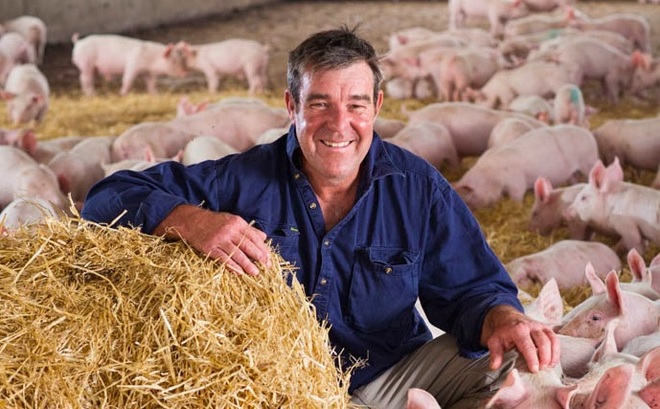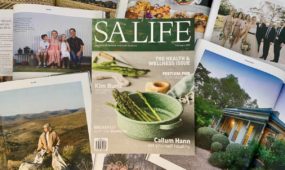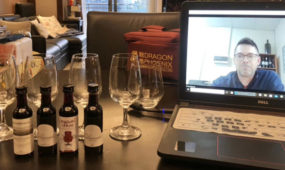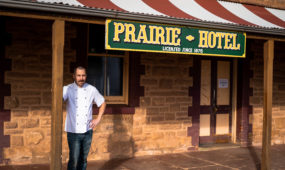Eat more pork and help save our bacon
I Choose SA

Sign up to receive notifications about new stories in this category.
Thank you for subscribing to story notifications.

‘Get some pork on your fork’ is the famous line second-generation pig farmer Andrew Johnson needs South Aussie shoppers to hear now more than ever.
The owner of Mt Boothby Pastoral Company is standing in the middle of the stall-free, straw-based growing shelter, his livelihood snuffling at his boots.
At the centre of his 18,000-acre mixed farm enterprise in the small Murray Mallee service town of Tintinara, 40km from Keith, is a 1000 sow, farrow to finish operation, one of the state’s larger piggeries.
Andrew has spent most of his working life in Tintinara, his father establishing the piggery in the late 1970s as a way to diversify farm operations.
“I always knew I was going to be a farmer and pigs have always been a key part of what I love doing,” says Andrew, Brand South Australia’s latest I Choose SA ambassador.
“They’re very intelligent animals and they’re very efficient, I have a lot of curiosity for them.”
Intelligent, yes. But SA pork quite literally brings home the bacon.
The state’s pork industry contributes $385 million to the SA economy, supporting almost 2500 full time local jobs and providing $188 million in household incomes for local families.
This is according to figures released earlier this year by Australian Pork Limited which also acknowledges that the pig production sector is more important in SA than in any other state.

Tintinara pig farmer and I Choose SA ambassador Andrew Johnson. Photo by James Knowler/JKTP.
Despite its prevalence to the local economy, the pork industry is currently stuck in a glut due to a downturn in prices, an oversupply of meat and increased feed grain prices.
Andrew believes the oversupply issues have been brought about by the industry becoming a victim of its own success, as pig producers nationwide undertook significant farm investments and some expansions, shooting up productivity.
“The pricing is depressed at the moment and it has been because of some oversupply issues,” Andrew says.
“Prior to now, we were in pretty good times and through these better times producers were investing in their infrastructure, making improvements and are now achieving better productivity out of their piggeries.”
To counteract the industry-wide struggles, the pork industry is committed to backing its own, with a number of initiatives rolling out to secure the wellbeing of farmers and their families.
Pork SA chair Mark McLean explained at a recent Brand South Australia agribusiness event how charity campaigns, farm support services, and choose local pushes were among efforts to help the industry bounce back.
“We are experiencing a downturn at the moment, there is no doubt about that. But the opportunity is what do you do, how do you respond?” he says.
“The first priority we identified was to support our people, to support our farmers, to help producers make decisions as early as possible by funding well-being counsellors and providing pork industry specialist support to rural financial counsellors.”
In addition, Pork SA’s charity campaign involves donations of pork products to Catherine House in Adelaide, Foodbank and The Hutt Street Centre. The initiative not only helps those less fortunate but further spreads the important message about the need for households to consume more locally grown pork.
South Aussie shoppers will also play a part in giving the industry a leg-up, as households are urged to not only choose Australian pork, but eat more of it.

Andrew Johnson’s sons Will, 10, and Eddie, 11, on the farm at Tintinara. Photo by James Knowler/JKTP.
Consumers should look for the bright pink Australian Pork logo on packaging to ensure the product is grown by Aussie pig farmers.
Mark encourages shoppers to also keep an eye out for country of origin labelling and only purchase pork products made from 90% or more Australian ingredients.
“If it doesn’t have more than 90% on that barcode, it’s probably not Australian, it’s probably the saline, the water, it might even be the packaging.”
Back on the farm at Tintinara, Andrew Johnson echoes the same sentiments.
Consumers backing Aussie pork means that not only will his two young sons have a solid chance at taking over the family farm in coming decades, but it also means something for the 15 full time team members currently employed by the business.
“Our business is very important locally, it’s one of the major employers along with Thomas Foods International feedlot up the road,” Andrew says.
“The economic impact per sow is about $3000 back into the community, so that gives you an idea about what impact it has. The pig industry is incredibly important in our regions.”
But like all Aussie farmers, pork producers are resilient and Andrew is quick to point out the many strengths of the industry.
“The pig industry has always been very forward and I’m very proud of it. About eight years ago we decided voluntarily as an industry to phase out the use of sow stalls and that was a first in the world,” he says.
“Over 90% of our industry is quality assured to ensure food safety, welfare and environmental regulations are adhered to.”
Andrew also speaks highly of the industry’s forward-thinking approaches to genetic improvements and bio energy production.
In 2004 he took research into his own hands when he won a Nuffield Scholarship to study sow welfare, disease management, electronic identification and sow housing. He subsequently became chairman of Nuffield Australia and a director of Nuffield International, having completed both roles recently.

Tintinara pig farmer Andrew Johnson urges shoppers to choose Australian grown pork products. Photo by James Knowler/JKTP.
Other strengths of the state’s pork industry includes our processing facilities. Every week about 22,000 ‘baconer’ pigs are sent to either JBS at Port Wakefield or Big River Pork at Murray Bridge, two of the nation’s largest pork abattoirs. The majority of Australian pork is sold to the domestic market, with some entering Singapore and New Zealand.
Despite the challenges, Andrew is confident about the future of SA’s pig industry and the state’s agriculture sector as a whole.
He says employment opportunities are in abundance in most regional towns, but admits the next challenge is encouraging more people to choose to live and work in country areas.
As a keen supporter of the rural town’s sporting clubs, he says Tintinara and its humble population of 527 will always be home.
“I love livestock and animals, country areas and the people in them, I love my community,” Andrew says.
“I couldn’t see myself anywhere else, it’s a great place to be.”
This story was first published by Brand South Australia for the Regional Showcase.
Industry in focus: Agribusiness
Throughout the month of October, the state’s agribusiness industry will be under the magnifying glass as part of I Choose SA.
South Australian farmers, producers, agricultural researchers and biosecurity workers are the lifeblood of our country communities and are big players in the state’s overall economic welfare. Read more stories here.
Visit I Choose SA to meet the people building business and industry in SA, and to find out how your choices make a difference to our state.
[logooos_saved id=”13411″]
Like this story? Nominate a story from your region.
Click here to nominate >>




